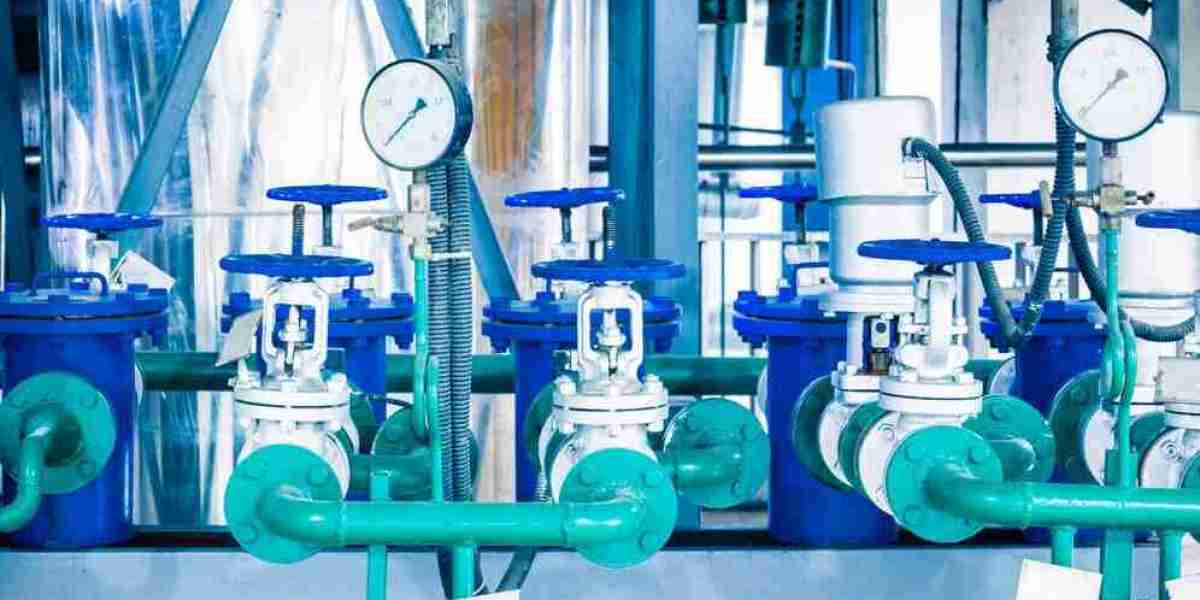The demand for ultrasonic flowmeters has been steadily increasing in recent years, driven by their ability to provide precise and non-invasive flow measurement solutions across a wide range of industries. Ultrasonic flowmeters, which operate by measuring the velocity of fluids using sound waves, are favored for their high accuracy, low maintenance, and versatility in measuring liquids, gases, and steam. This article delves into the factors influencing market demand, key applications, and regional trends, while also highlighting the future prospects of this dynamic industry.
Key Drivers of Market Demand
Growing Focus on Energy Efficiency
Industries worldwide are under pressure to optimize energy consumption and reduce operational costs. Ultrasonic flowmeters are proving indispensable in achieving these goals, particularly in sectors like oil and gas, power generation, and water management. Their ability to detect leaks and measure flow rates with minimal energy loss has made them a preferred choice for energy-efficient operations.Rapid Urbanization and Infrastructure Development
The ongoing expansion of urban infrastructure in emerging economies, especially in Asia-Pacific and the Middle East, has created a significant demand for ultrasonic flowmeters. These devices are essential for monitoring water distribution, wastewater treatment, and energy usage in large-scale infrastructure projects.Stringent Environmental Regulations
Governments across the globe are implementing stricter environmental laws to reduce waste and improve resource management. Ultrasonic flowmeters, with their precise measurement capabilities, help industries comply with these regulations by minimizing wastage and ensuring efficient resource utilization.Advancements in Technology
The integration of advanced technologies such as the Internet of Things (IoT), Artificial Intelligence (AI), and wireless communication has significantly boosted the adoption of ultrasonic flowmeters. Smart flowmeters enable real-time monitoring, predictive maintenance, and improved decision-making, further driving market demand.
Applications Across Industries
The versatility of ultrasonic flowmeters makes them suitable for a variety of applications, including:
- Oil and Gas: Accurate flow measurement is critical for oil extraction, refining, and transportation. Ultrasonic flowmeters provide reliable data in challenging environments, such as pipelines and offshore rigs.
- Water and Wastewater Management: These flowmeters are widely used to monitor water distribution networks, detect leaks, and manage wastewater treatment processes.
- Chemical Processing: Ultrasonic flowmeters are ideal for handling aggressive or viscous fluids commonly found in chemical plants.
- Power Generation: In power plants, ultrasonic flowmeters help measure steam and water flow, optimizing energy generation and efficiency.
- Food and Beverage: The hygienic design of ultrasonic flowmeters makes them suitable for measuring fluids in food and beverage production, ensuring compliance with health standards.
Regional Insights
The demand for ultrasonic flowmeters varies across regions, with notable trends observed in:
- Asia-Pacific: This region is the largest and fastest-growing market, driven by rapid industrialization, urbanization, and infrastructure development. Countries like China, India, and Japan are key contributors to market growth.
- North America: The presence of established industries, coupled with stringent environmental regulations, has led to a steady demand for ultrasonic flowmeters in this region.
- Europe: The focus on renewable energy and sustainable resource management is driving the adoption of ultrasonic flowmeters across European industries.
- Middle East and Africa: The growing oil and gas sector in the Middle East and water scarcity challenges in Africa are boosting the demand for ultrasonic flowmeters in these regions.
Challenges in Meeting Market Demand
Despite the growing popularity of ultrasonic flowmeters, the market faces several challenges:
- High Initial Costs: The advanced technology used in ultrasonic flowmeters makes them more expensive than conventional flowmeters, which may limit adoption in cost-sensitive markets.
- Technical Expertise Requirements: The installation, calibration, and maintenance of ultrasonic flowmeters require skilled personnel, which can be a barrier in regions with limited technical expertise.
- Environmental Limitations: Extreme conditions, such as high temperatures or pressures, may affect the performance of ultrasonic flowmeters, restricting their use in specific applications.
Future Outlook
The future of the ultrasonic flowmeters market looks promising, with significant opportunities for growth driven by:
- Innovation in Smart Flowmeter Technology: The development of IoT-enabled, AI-driven, and wireless ultrasonic flowmeters will continue to enhance their functionality and appeal to industries seeking advanced solutions.
- Rising Demand in Emerging Markets: As more industries in developing regions adopt efficient flow measurement technologies, the demand for ultrasonic flowmeters is expected to rise.
- Expansion into New Applications: Ultrasonic flowmeters are likely to find increased use in niche markets such as pharmaceuticals, biotechnology, and renewable energy projects.
In conclusion, the growing demand for ultrasonic flowmeters is fueled by the need for accurate, efficient, and environmentally friendly flow measurement solutions. While challenges such as high costs and technical complexity persist, advancements in technology and expanding application areas are expected to drive the market forward in the coming years.




